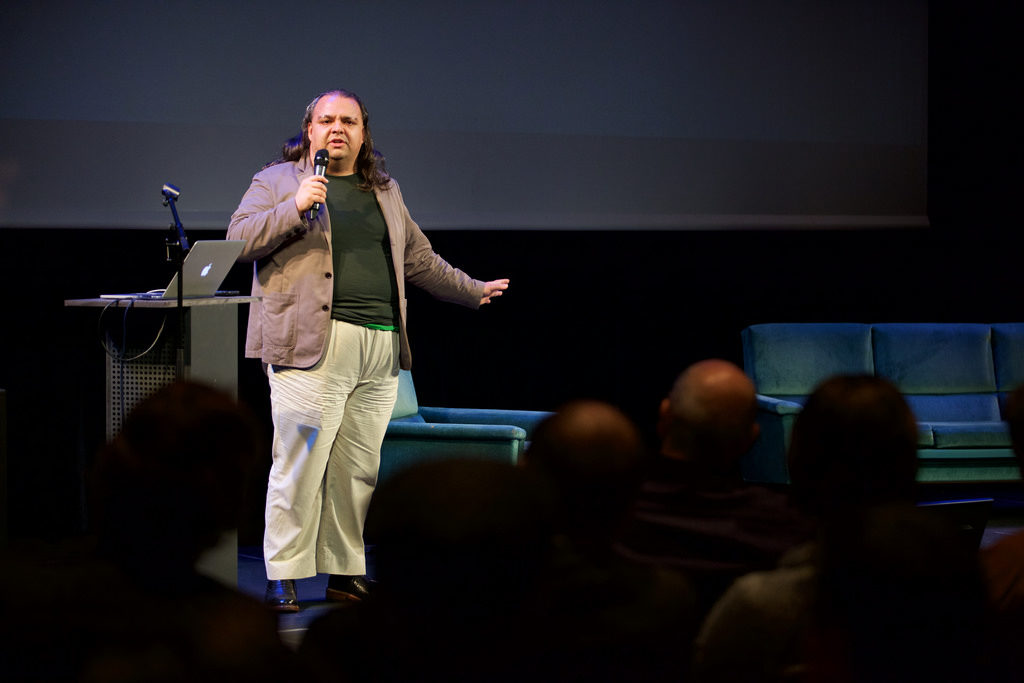“Our new technologies have fractal effects that can be observed on global levels, societal levels, and individual levels. Consider the environmental effect of high-tech manufacturing; consider conflict minerals going into so many laptops; consider the effect the ubiquity of smartphones has on geopolitical discourse; on national discourse. Consider where the American stock market would be without big tech companies. Consider where you would be.” – Sonya Mann
This concludes my two-part investigation into micropayment frameworks. Part one, which focused on their differing technical aspects, can be found here. I herein speculate on the potential socio-political effects of micropayment frameworks, in an attempt to pre-empt any future issues that could arise from their wide-scale implementation. Will they lead to new areas of economic freedom? Or are they merely the harbingers of an even deeper commodification of our (online) lives?
The potential socio-political effects of wide scale micropayment framework implementation are still highly speculative. I want to tap into the productive power of speculative discourse from a position unfettered by the sort of thinly veiled political motives endemic to contemporary economic discussion (if they are veiled at all. Thus, by analyzing micropayment frameworks through the lens of Sonya Mann’s ‘Cyberpunk Sensibility’, we can fruitfully navigate the nuanced balance of their (potential) advantages and drawbacks without attempting to explain this balance from ideologically laden perspectives. Furthermore, since the frameworks in question are still thoroughly embryonic, the outcome of this speculative – and hopefully neutral – analysis may serve to influence their future.
Mann’s ‘sensibility’ is not an ideological position, or filter, but instead – borrowing from Susan Sontag – what she labels as a “taste in ideas”. It is a matter not of claiming that we exist inside of a William Gibson novel (however much the recent Vault 7 data-dump makes it feel that way) but instead a matter of developing a conceptual heuristic free from the over-idealizations of political ideologies, in order to properly assess our fragmented, technologically-accelerated system. Stripped of damaging over-idealizations, a sudden influx of new technology into a system should thus be understood merely as a creator, as well as amplifier, of power-relations within this system. It acts as a catalyst for the creation of new, (potentially) further polarized power structures; any sudden technological influx causes what Mann dubs “asymmetric seismic upheaval” across the entire system it appears inside of.
This upheaval doesn’t necessarily solidify power for those on either end of the spectrum of power, but instead creates new advantages to be used by either party; a kind of sped-up technological arms race thus occurs. Mann relies on the well-worn ‘lone activist vs. government institution’ dynamic to get this point across succinctly:
“America’s #BlackLivesMatter movement has flourished on social media […] Protest organizing takes place via hashtag and DM […] Of course, large institutions have access to the same tools […] Geofeedia harvested data from social media sites to help police pinpoint protesters.”
The most productive way to understand the implications of micropayment framework implementation is through a similar dynamic. The potential power-dynamics at play in micropayments frameworks are an economic analogue of Mann’s ‘individual vs. institution’ scenario. Just as Brave and Searchtrade grant individuals an economic autonomy not currently available to them elsewhere, the cold world of machine to machine payments provided by the technical ‘black box’ of IOTA’s Tangle system places the control firmly back into the hands of the few developers who properly understand it, potentially centralizing control over capital flows.
A few comments must be made before proceeding. Firstly, the diversity of the users on the various micropayment platforms themselves has potentially wide-reaching implications for the technology. Micropayment platforms are only just starting to get off the ground, curtailed as they currently are by the technical limitations of the Bitcoin blockchain. How these limitations are surpassed will have implications for the way that these platforms operate on a mechanical level. These mechanical implications could affect the user-base that the platform relies on; many within the Bitcoin community object to utilizing the Lightning Network to provide cheap, efficient microtranscations, due to its use of off-Blockchain payment channels, which stands as a risk to the overall security of the Bitcoin network. How a platform responds, or which measures it takes to operate in the most financially efficient manner whilst retaining its user base, relies on the specific user base the platform aims to help.
Even a brief investigation of the different platforms current in operation reveals huge differences in their target user bases. Searchtrade, a venture partially initiated by Cypherpunk-era software engineer, disaster consultant, [and] global resilience guru Vinay Gupta, aims to economically empower anyone who uses its search engine. Considering the ubiquity of search engine usage, it is fair to say that the intended user-base of the platform is anyone who uses the internet. Contrasting this with two other micropayment platforms – 21INC and IOTA – highlights the gravitas of this point. 21INC is the current darling of the FinTech community, having garnered a record breaking initial investment of $116 million. They are bringing cryptocurrencies into the world of sleek web design and blue-collar freelance coding jobs. Their target user base will presumably reflect these values, and reside in a far narrower slice of the socio-economic spectrum than those Gupta is reaching out to with Searchtrade. IOTA and their services are only of interest to those who have spare computing power they wish to capitalize upon; IOTA presumes of their users ownership of a considerable amount of hardware such as 3D-printers, or cloud-accessible servers – a position that few individuals are lucky enough to be able to afford in the first place.
Some of these platforms, such as web browser Brave, utilize well-understood technology to provide micropayment services, whereas others do not. The cryptographic substrate that IOTA utilize – Tangle – is technically complex to the point of being beyond the grasp of almost all users of cryptocurrencies, if not computer science students as well. As such, a technical analysis of IOTA is beyond all but a few member of the crypto-community. Although IOTA have done nothing to suggest that they could act dishonestly in the future, past experiences with platforms such as Steemit (which relied on technical complexity as a smokescreen for an unfair currency distribution system), at the very least, grant speculations on their future actions a certain cautious bias.

(the ‘software engineer, disaster consultant, and global resilience guru’ himself speaking at Fiber Festival last year)
Finally, the loose, ‘bottom-up’, venture capital nature of the frameworks further muddies the already-disturbed waters here. The lack of standardization across the various frameworks discussed makes spotting trends in their activities very difficult. The emergent socio-political implications of large-scale micropayment implementations will therefore be difficult to approximate with any degree of accuracy.
That said, a somewhat-piecemeal approach to socio-economic speculation is still of merit. Importantly, we can speculate as to the effects of those platforms with the biggest target user base, such as Searchtrade, Brave, and Steemit. These platforms allow for individuals to capitalize on the immaterial labor they would otherwise engage in anyway, simply in virtue of being online, while the effects of the novel spheres of economic interaction promised by 21INC and IOTA are still clouded by incalculable variable combinations.
Searchtrade et al. are platforms that are attempting to redirect (at least some of) the capital being produced in incredible volumes to the individuals involved in producing it. Their users are simply people demanding that their digital labor be financially compensated. In essence, these frameworks provide a platform by which the currently unfair distribution of financial reward for immaterial, online labor can be, to an extent, evened out.
The issue of predicting emergent politics becomes slippery when it comes in the form of hypothetical wide-scale implementation. What will emerge will probably exist in a constant state of flux between the ’best’ and ‘worst’ case scenarios, depending on the political and economic viewpoint of individuals within it. For illustrative purposes I will simply lay out both of these positions below, and leave the rest to the imagination of the reader.
The ‘best-case’ scenario involves wide-scale micropayment framework implementation leading to a furthering of the ‘entrepreneurial self’ that is fueling the precarious work situation currently faced by so many, by creating numerous additional capital flows for individuals to earn via. These additional flows of capital can exist simultaneously with an individual’s tradition source of income. Although prima facie any consolidation of the entrepreneurial self is definitely not positive, it appears that individuals are ever further exploited online, providing increasing amounts of immaterial labor as we move towards the completely commoditized ‘Third Web’. Wide-scale micropayment usage could thus be seen as simply capitalizing on an unavoidable situation as best as one can.
In this sense, micropayment frameworks are essentially experimental economic cultures. They embrace the inevitable commoditization of the web, and are attempting to redistribute power beyond the few who control its various monetary bottlenecks. Instead, they create as much leverage as possible for additional avenues of gaining capital with almost no additional labor on the part of the individual.
If these alternative economic flows grow to the $925 billion predicted by Wedbush Securities, there would be significant risk of these systems being used to further exploit individuals economically. The ‘worst case’ scenario involves these monetary flows giving rise to new power centers somewhat free from government control, and thus unaccountable for abuse of actors in the network. Ironically, whether these platforms are used as tools of abuse (or not) rests on the shoulders of the few individuals controlling these platforms; people such as Vinay Gupta. This is pertinent not merely to discussion of micropayment platforms, but to discussion of crypto-communities in general. The technical knowledge required to engage with decentralized platforms – thus avoiding exploitation – is currently beyond the majority of the population. Yet enabling this majority to reap the benefits of these platforms, when implemented on a wide-scale, leads to issues. This is because wide-scale interaction with a public who don’t have the required technical knowledge necessitates third-party platforms, or intermediaries, to allow for interaction with cryptocurrencies. These third party intermediaries, however, bring with them risks of top-down abuse that crypto-platforms were originally created to circumvent.
Mann’s ‘sensibility’ thus provides us with the following speculative conclusion. Post-upheaval, our best-case scenario appears to be a reproduction of current economic dynamics, albeit with a cryptographic veneer facilitating economic compensation for individuals’ immaterial labor. Considering that the user-base of the platforms enabling this is essentially anyone with an internet connection, the socio-political implications of this are potentially huge, as billions of people around the globe gain a form of economic empowerment previously only envisaged by proponents of Universal Basic Income. Whether this ‘best-case’ can be shielded from potential third-party exploitation – our ‘worst-case’ scenario – remains to be seen.



